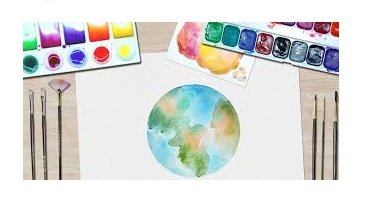As the 2022 United Nations
Climate Change Conference takes place in Egypt, world leaders will gather to
find global solutions to the climate and ecological crisis. It seems timely to
assess how some international environmental initiatives are harnessing the
power of art in multiple ways to bring about meaningful systemic change. It is
great to see that art has finally been given its rightful place in society,
especially as this wonderful medium helps us think differently and become
change-makers of the world. The art world is sounding the alarm on the climate
emergency, are we even listening? Art can be the bridge between the cold hard
facts of climate change, and the emotions we need to feel to actually take
action. Art is essential therefore in helping us to feel the urgency of those
challenges.
The art world has been making up
for the lost time in recent years, it is overdue compensation crescending in the
past six months when more than a dozen exhibitions explicitly confronting
climate change have been on view in many cities across the world. Is it the
rise of extreme weather events in the art world?
Whatever the reason, the support for environmentally conscious art is
surging.
Last year, in June, the United
Kingdom became the first major economy to commit to net zero emissions by 2050.
It was emphasized that every sector must do its part to create this lasting
change. This includes Art. As the effects of climate change grow rapidly,
the need for change is becoming more and more urgent. This year, 28 art
organizations joined the World Weather Network on a yearlong project to
document and reflect on weather conditions in disparate locales.
When exhibits aim to raise
awareness of climate change, the very effects of putting together exhibitions,
publishing, and communication, emissions from flights, transporting artworks,
installations and fabrication have been shown to have a negative effect on what
they are trying to protect. Some art
galleries are making the changes as we speak. Jameel Art Centre in Dubai was
one of the first institutions in the Gulf to implement strategies that
confirmed that an overwhelming majority of their emissions come from air
conditioning and humidity control, which they have taken on board as part of a
multifaceted attempt to address climate change.
Similarly, many other organizations are in the early stages of
reorienting their museums. Artists privately say that they sometimes ask for
sustainable environmental solutions, which are promised and then not delivered
in the final stages of installations.
Artistic programming also has an active role to play in reorienting thoughts around climate change. National governments accused of reneging on their responsibilities, scientists, activists, artists, and designers believe they have played a role in keeping the conversation of change at the forefront. This article aims to look at 5 ways the art world can help tackle climate change.
1. Reduce Emissions
Once an institution understands how much and where it is polluting, it can take active measures to reduce its carbon footprint. For example, let's transportation, is it possible to reduce air travel? What about taking public transportation instead of using a private vehicle? Many institutions are advised to look at the three R's - reduce, reuse and recycle. Organizations should also try to eliminate all landfill waste by using reusable crates and sourcing alternatives to bubble wrap. When it comes to buildings, institutions are requested to invest in eco-friendly infrastructure and find green sources of energy to power the building's electrical and heating systems. They are encouraged to become creative in thinking about other ways to reduce waste.
2.
Stage environmentally themed Exhibitions
While science plays a key role in conveying the urgency of climate change, artists too can play an important role. Art has a way of getting ahead of the general discourse because it can convey information in novel ways.
3. Collect Data
Institutions can measure their own carbon footprints, take stock of the extent of pollution, and get to handle how much needs to be cut down.
4. Rethink the status quo
As time goes on, it becomes increasingly evident that the art world needs to rethink its existing structures to become sustainable. Instead of pushing for bigger and better productions, organizations need to think about decreasing the size of their buildings and prioritizing collections that don't require enormous space.
5. Use media to influence opinion
In Pakistan for example, the media plays a huge role in opinion-making. Sadly there are other issues that dominate TV talk shows and print media. One may think, climate change does not sell very well. But it is necessary to create this urgency
6. Encourage Human Empathy
Climate change is asking us to
care about people we've never met and fight for their happiness as well as our
own. It needs to happen to us for it to be urgent for us to act upon it. Art can
help create this need by helping us to be more empathetic towards others.